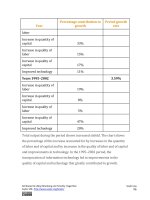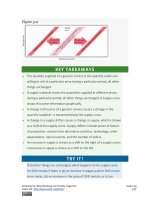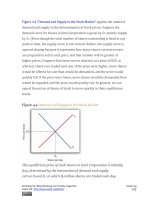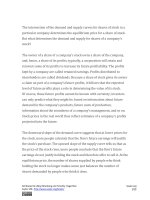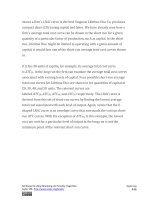Authors libby rittenberg 851
Bạn đang xem bản rút gọn của tài liệu. Xem và tải ngay bản đầy đủ của tài liệu tại đây (425.5 KB, 1 trang )
Should the entire world be the geographic region for the market for
refrigerators? That is an empirical question. If the cross price elasticities
for refrigerator brands worldwide are high, then one would conclude that
the world is the relevant geographical definition of the market.
In the 1980s both the courts and the Justice Department held that bigness
did not necessarily translate into badness, and corporate mergers
proliferated. In the period 1982–1989 there were almost 200 mergers and
acquisitions of firms whose value exceeded $1 billion. The total value of
these companies was nearly half a trillion dollars.
Megamergers continued in the 1990s and into the 21st-century. In 2000,
there were 212 mergers valued at $1 billion or more and in 2006 nearly
that many. Since then, merger activity has decreased, in part due to turmoil
in financial markets. [2]
KEY TAKEAWAYS
The government uses antitrust policies to maintain competitive
markets in the economy.
The Sherman Antitrust Act of 1890 and subsequent legislation defined
illegal business practices, but these acts are subject to widely varying
interpretations by government agencies and by the courts.
Although price-fixing is illegal per se, most business practices that may
lessen competition are interpreted under the rule of reason.
The Justice Department and Federal Trade Commission use the
Herfindahl-Hirschman Index to determine whether mergers should be
challenged in particular industries.
Attributed to Libby Rittenberg and Timothy Tregarthen
Saylor URL: />
Saylor.org
851
